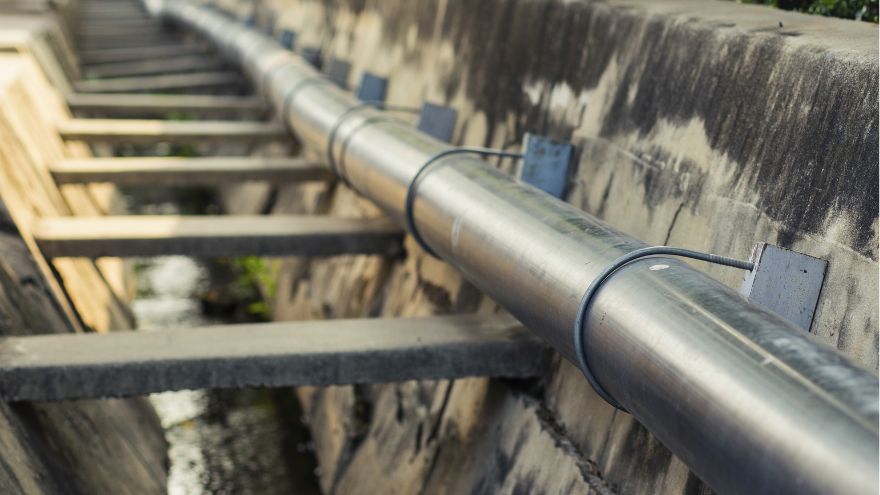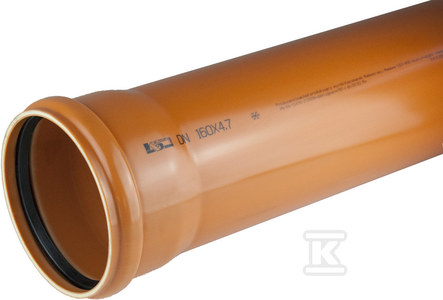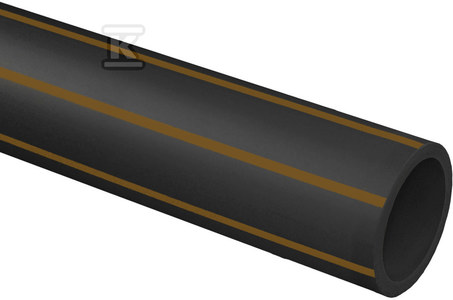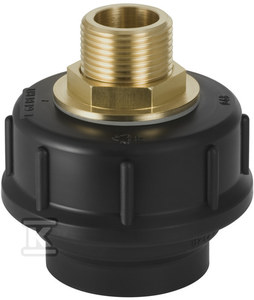Pressure sewage performs its functions most effectively in areas with diversified terrain. Hills and slopes are not conducive to building gravity sewage systems, nor are places rich in various types of above-ground or underground obstacles. What is pressure sewerage? How does it work and where is pressure sewage best suited? What is pressure sewage made of?

Check out sewage products at the Onninen wholesaler
From the article you will learn, among other things:
- Where can pressure sewage be used?
- What factors influence the efficiency of pressure sewage?
- What does a pressure sewage system consist of?
What is pressure sewerage?
Pressure sewerage is a system  sewage system in which sewage is pumped by pumps to higher ground levels or to central collection points. Unlike gravity sewage systems, the flow of waste does not depend on the terrain, the number of obstacles, the length of the pipeline or the connection solutions used to ensure an appropriate slope.
sewage system in which sewage is pumped by pumps to higher ground levels or to central collection points. Unlike gravity sewage systems, the flow of waste does not depend on the terrain, the number of obstacles, the length of the pipeline or the connection solutions used to ensure an appropriate slope.
The undoubted advantage of this solution, apart from greater freedom of sewage flow, is the fact that the installation of a pressure sewage system does not exclude cooperation with a vacuum and gravity sewage system. In such a case, it is only important to use an expansion chamber equipped with ventilation at the point where the pressure sewage system meets other sewage systems. The treatment is intended to prevent unpleasant odors from escaping from the well.
The design and implementation of the pressure sewage system ensures:
- greater freedom in arranging the pipeline route;
- ability to cross terrain obstacles;
- allows you to limit the depth of excavations necessary to lay the pipes.
How is pressure sewage constructed?
 The efficiency of a pressure sewage system depends largely on the correct selection of its components and the quality of the construction elements used. An important part of the system is the external sewage system , located outside the main sewer. It is used to build a network of pipelines, usually designed in a branched or ring form (applies to connecting several buildings to a single domestic sewage pumping station).
The efficiency of a pressure sewage system depends largely on the correct selection of its components and the quality of the construction elements used. An important part of the system is the external sewage system , located outside the main sewer. It is used to build a network of pipelines, usually designed in a branched or ring form (applies to connecting several buildings to a single domestic sewage pumping station).
The condition for the functioning of a pressure sewage system is the failure-free operation of submersible sewage pumps, which, in cooperation with a device grinding solid contaminants, maintain the required pressure in the pipes, enabling the flow of sewage. Pumps are installed in pumping stations, regulating the flow of waste depending on demand and distance.
Pressure sewage systems use pressure tanks to collect and balance the flow of sewage. These tanks help maintain constant pressure in the system and ensure stable operation of the pumps.
Control components such as check valves, control valves and pressure sensors cannot be omitted at this point. By monitoring and controlling the flow of sewage, it is possible to maintain optimal operating conditions of the system.
Pressure sewage is used primarily in areas with high building density, where a traditional gravity system would be insufficient. These systems are effective in transporting sewage over longer distances, in areas with varied topography, and when it is necessary to overcome obstacles such as hills.
It should be noted that the details of the construction and operation of pressure sewage systems may vary depending on the specific project and the requirements dictated by the conditions in a given area.
Products necessary for pressure sewage
Great interest in sewage systems  pressure systems owe, among other things, lower construction costs than in the case of conventional sewage systems. Let's check what elements are the components of the system?
pressure systems owe, among other things, lower construction costs than in the case of conventional sewage systems. Let's check what elements are the components of the system?
1. PVC and PE pressure pipes used in pressure sewage systems are more resistant to high pressure and pressure resulting from the transport of pollutants.
2. Valves allow you to control the flow of sewage and regulate the pressure in the network. The installations use:
- ball valves;
- check valves;
- reducing valves;
- control valves.
3. Pumps generate the required pressure to support the flow of pollutants in the network.
4. Pumping stations are built in larger pressure sewage systems. These are facilities in which pumps and other necessary devices are placed, responsible for mixing sewage from lower points to higher points or to sewage treatment plants.
5. Controllers and sensors that pressure sewage systems are equipped with monitor and control the operation of the system. Among them, the following are worth mentioning:
- pressure sensors;
- level sensors;
- flow sensors.
- And other devices whose task is to provide current information about the status and operation of the network.
6. Mounting accessories are necessary for the installation and maintenance of pressure sewage systems. They include, among others:
- PVC, PE pressure fittings ;
- connectors;
- reductions;
- knees;
- clamps;
- seals.
Before starting the construction or modernization of a pressure sewage system, it is always worth consulting a representative of a reputable supplier of sewage systems. This will allow you to select appropriate materials and apply optimal technological solutions, ensuring long-term and failure-free operation of the pressure sewage system.